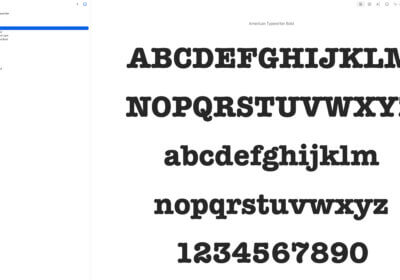As one of the largest tech companies in the world, Google collects important data through fonts. Find cool information in this article.

Google Fonts is a free, open-source platform that provides web developers with a vast library of fonts to choose from.
However, what most users don’t realize when using Google Fonts on their website, is that Google collects data.
Plus they sell that collected data to advertisers.
How it works
When a user visits a website that uses Google Fonts, their browser must connect to Google’s servers to retrieve the font files. This connection creates a unique identifier that allows Google to track the user’s browsing activity across multiple websites, even if they are not signed into a Google account.
Google can then use this information to create detailed profiles of users, including their interests, browsing history, and demographics. This data is then sold to advertisers, who can use it to target users with more relevant ads.
Google Fonts also allows website owners to track user interactions with their site, such as how long they stay on a page or where they click. This information can help website owners optimize their site for better user engagement, but it also provides Google with even more data on users.
The risks of font tracking
While Google argues that font tracking is a common practice used by many web companies, it has raised concerns among privacy advocates. Font tracking is a form of third-party tracking, which means that users are being tracked by a company they may not even be aware of.
This lack of transparency is a major concern, as users have no control over how their data is being collected or used. Additionally, font tracking can be used to bypass ad-blockers, as many ad-blockers only block tracking by known third-party trackers, not by fonts.
The sale of user data to advertisers is also a concern.
It can be used to target vulnerable populations, such as children or people with certain medical conditions.
This type of targeting can be especially harmful if the data is used to discriminate against users.
What users can do
While it may be difficult to avoid using Google Fonts, there are steps users can take to minimize their exposure. One great option is to use a font hosted on their own server.
Users can also use a browser extension or add-on that blocks third-party tracking, such as Privacy Badger or Ghostery. These tools can help block font tracking as well as other forms of third-party tracking.
Finally, users can take steps to protect their online privacy by using a VPN or Tor browser.
Conclusion
Google Fonts is just one example of how tech companies are using user data to fuel their advertising businesses. While Google argues that font tracking is a common practice, it raises concerns about transparency.
Users can take steps to protect their online privacy.
Steps as using a font hosted on their own server or using a browser extension to block third-party tracking.
However, it is ultimately up to tech companies like Google to be more transparent about their data collection practices.



